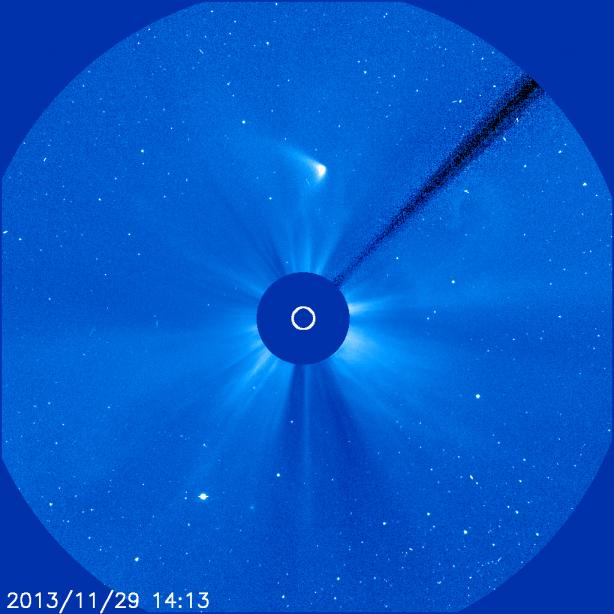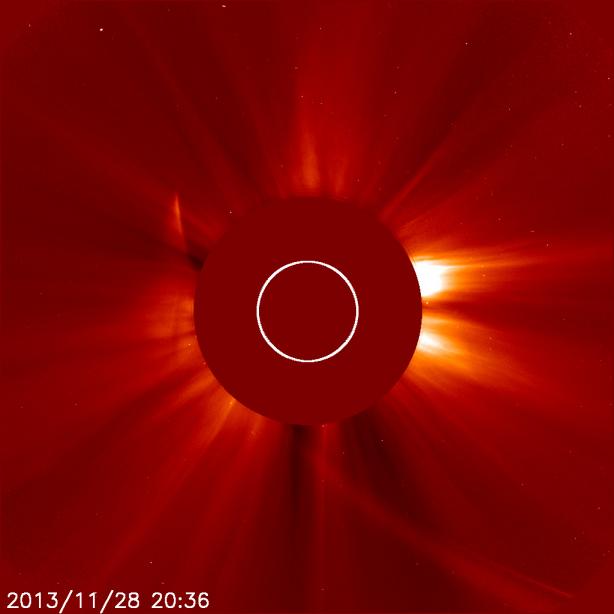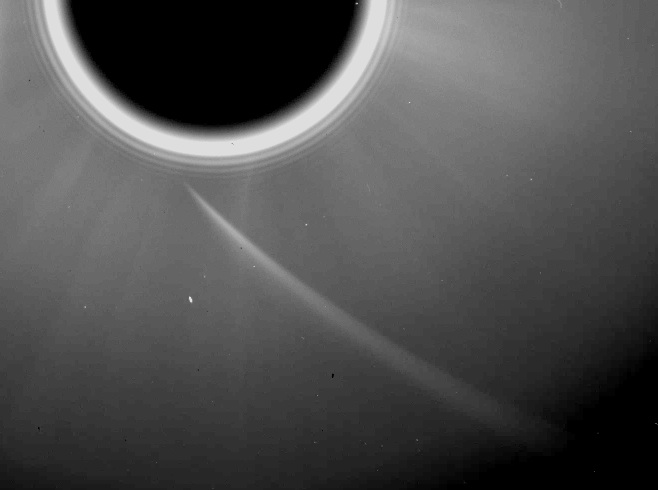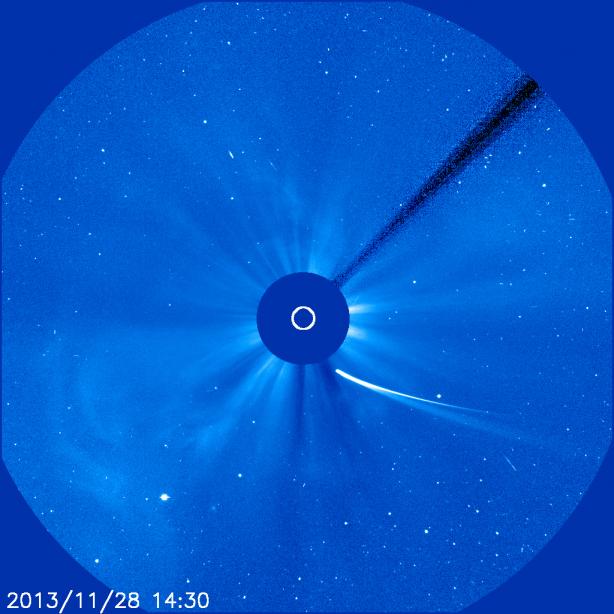COMET HIGHLIGHTS for MARCH 2013
2014-Mar-2
The best comets for small telescope users remain C/2013 R1 (Lovejoy) and C/2012 X1 (LINEAR). Both of these comets have been easily visible to average backyard observer over the past 3-4 months. Though still faint at magnitude 11-12, inbound C/2012 K1 (LINEAR) is starting to show more signs of life and may break 10th magnitude during March
Outbound Comets
C/2013 R1 (Lovejoy) [T = 2013 Dec 22, q = 0.81 AU]
Comet Lovejoy was one of the best comets of 2013. Discovered only a few months prior to its late December perihelion, Lovejoy didn’t enjoy the benefit of the media hype that welcomed ‘Great Comets that Weren’t’ C/2011 L4 (PANSTARRS) and C/2012 S1 (ISON). Though not as bright as the aforementioned comets, Lovejoy was better placed for observations over a much longer span of time. Now in full retreat from the Sun, the comet has faded to magnitude 8.0-8.5. It starts the month 1.46 AU from the Sun and 1.53 AU from Earth. By the end of the month, the comet will be 1.88 AU from the Sun and 1.59 AU from Earth. The comet should continue to fade from magnitude 8.0-8.5 to close to 10.0 during the course of the month. Lovejoy is a morning object in Serpens Cauda.
Inbound Comets
C/2012 X1 (LINEAR) [T = 2014 Feb 21, q = 1.60 AU]
Comet LINEAR reached perihelion back on February 21. Discovered back in December 2012 it was never expected to become a bright comet until it underwent a major outburst last October brightening from 14th to 7th magnitude. It is now around magnitude 8.0. Since its distance from the Sun and Earth will not change much during March (heliocentric distance increasing from 1.60 to 1.68 AU while the geocentric distance decreases from 2.00 to 1.89 AU), it should not brighten or fade much. It is a morning object moving through Aquila.
Some Fainter Comets of Interest
C/2012 K1 (PANSTARRS) should become a nice binocular/small telescope comet this summer at 5th-7th magnitude. With perihelion on August 27 (q = 1.05 AU), PANSTARRS is still over 2.4 AU from the Sun this month. Similar to last year’s Comet ISON, K1 is a dynamically new comet and has showed signs of a slow-down in its brightening trend though recent visual observations suggest the comet may be brightening at a faster rate once again. The comet has also been displaying some interesting coma morphology. C/2012 K1 is shaping up to be an intriguing comet and it will be very interesting to watch the development of its brightness and morphology. The comet is a morning object located in Hercules and Corona Borealis and should brighten from around magnitude 11.5 to perhaps 10.0 this month.
Please check out the Comet Section image gallery for C/2012 K1 (PANSTARRS) and we ask that you image the comet and contribute your images and observations to the Section.
290P/Jager is a short-period comet discovered in 1998 by renowned comet imager Michael Jager. At the time of discovery the comet was on its first trip into the inner Solar System after a close-approach to Saturn (0.016 AU) decreased its perihelion distance from 8.47 to 2.13 AU. Jager passes perihelion on March 12 at 2.16 AU from the Sun (it will also be 1.65 AU from Earth at that time). Recent observations place the comet at 12-13th magnitude and we expect a similar brightness this month. It is an evening object located in Gemini.
The Section is always collecting observations (both visual and CCD) and magnitude estimates for all comets. An image gallery has been set up and now contains 309 images of 58 comets.
All ephemerides/positions for the above comets and all other comets can be generated at the Minor Planet Center and JPL/Horizons websites.
- Carl Hergenrother (Comet Section Acting Co-Coordinator)









